TRIHEXYL(TETRADECYL)PHOSPHONIUM BIS(TRIFLUOROMETHYLSULFONYL)IMIDE
Synonym(s):Tetradecyltrihexylphosphonium bis(trifluoromethylsulfonyl)amide
- CAS NO.:460092-03-9
- Empirical Formula: C34H68F6NO4PS2
- Molecular Weight: 764
- MDL number: MFCD04117695
- SAFETY DATA SHEET (SDS)
- Update Date: 2023-04-23 13:52:06
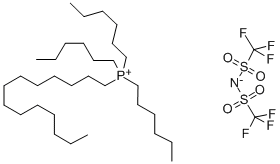
What is TRIHEXYL(TETRADECYL)PHOSPHONIUM BIS(TRIFLUOROMETHYLSULFONYL)IMIDE?
Conductivity
0.14 mS/cm (30 °C)
The Uses of TRIHEXYL(TETRADECYL)PHOSPHONIUM BIS(TRIFLUOROMETHYLSULFONYL)IMIDE
[P6,6,6,14][Ntf2] can be used in:
- The electrodeposition of nano and microcrystalline metals for electrochemical applications.
- The synthesis of amino acid ionic liquid functionalized graphene (AAIL-GR) applicable as a biosensor.
- The investigation of interactions between ionic liquids and fluorinated alkanes.
- The synthesis of pure rutile and anatase phases of nanocrystalline TiO2.
What are the applications of Application
Trihexyltetradecylphosphonium bis(trifluoromethylsulfonyl)amide is an Ionic liquid for copolymerisation
General Description
Trihexyltetradecylphosphonium bis(trifluoromethylsulfonyl)amide [P6,6,6,14][Ntf2] is an ionic liquid generally used in biosensors electrodeposition, and synthetic chemistry applications.
Properties of TRIHEXYL(TETRADECYL)PHOSPHONIUM BIS(TRIFLUOROMETHYLSULFONYL)IMIDE
| Density | 1.07 g/mL at 20 °C(lit.) |
| Flash point: | 52 °C |
| form | liquid |
| color | colorless |
| ECW | 4.4 V |
Safety information for TRIHEXYL(TETRADECYL)PHOSPHONIUM BIS(TRIFLUOROMETHYLSULFONYL)IMIDE
| Signal word | Danger |
| Pictogram(s) |
 Flame Flammables GHS02  Corrosion Corrosives GHS05 |
| GHS Hazard Statements |
H226:Flammable liquids H314:Skin corrosion/irritation |
| Precautionary Statement Codes |
P210:Keep away from heat/sparks/open flames/hot surfaces. — No smoking. P233:Keep container tightly closed. P240:Ground/bond container and receiving equipment. P280:Wear protective gloves/protective clothing/eye protection/face protection. P303+P361+P353:IF ON SKIN (or hair): Remove/Take off Immediately all contaminated clothing. Rinse SKIN with water/shower. P305+P351+P338:IF IN EYES: Rinse cautiously with water for several minutes. Remove contact lenses, if present and easy to do. Continuerinsing. |
Computed Descriptors for TRIHEXYL(TETRADECYL)PHOSPHONIUM BIS(TRIFLUOROMETHYLSULFONYL)IMIDE
New Products
4-Fluorophenylacetic acid 4-Methylphenylacetic acid N-Boc-D-alaninol N-BOC-D/L-ALANINOL Tert-butyl bis(2-chloroethyl)carbamate 3-Morpholino-1-(4-nitrophenyl)-5,6-dihydropyridin- 2(1H)-one Furan-2,5-Dicarboxylic Acid Tropic acid S-2-CHLORO PROPIONIC ACID ETHYL ISOCYANOACETATE 2-Bromo-1,3-Bis(Dimethylamino)Trimethinium Hexafluorophosphate (6-METHYL-[1,3]DITHIOLO[4,5-b]QUINOXALIN-2-ONE INDAZOLE-3-CARBOXYLIC ACID 4-IODO BENZOIC ACID (2-Hydroxyphenyl)acetonitrile 4-Bromopyrazole 5,6-Dimethoxyindanone 2-(Cyanocyclohexyl)acetic acid 4-methoxy-3,5-dinitropyridine 2-aminopropyl benzoate hydrochloride 1-(4-(aminomethyl)benzyl)urea hydrochloride diethyl 2-(2-((tertbutoxycarbonyl)amino) ethyl)malonate tert-butyl 4- (ureidomethyl)benzylcarbamate Ethyl-2-chloro((4-methoxyphenyl)hydrazono)acetateRelated products of tetrahydrofuran

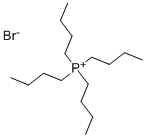
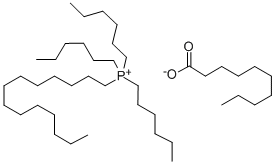
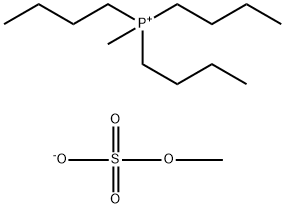


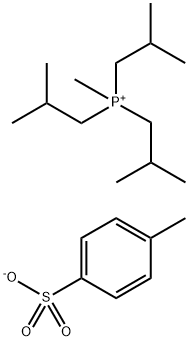
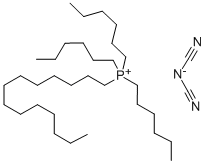
You may like
-
 Trihexyltetradecylphosphonium bis(trifluoromethylsulfonyl)amide, 95% CAS 460092-03-9View Details
Trihexyltetradecylphosphonium bis(trifluoromethylsulfonyl)amide, 95% CAS 460092-03-9View Details
460092-03-9 -
 Trihexyltetradecylphosphonium bis(trifluoromethylsulfonyl)amide CAS 460092-03-9View Details
Trihexyltetradecylphosphonium bis(trifluoromethylsulfonyl)amide CAS 460092-03-9View Details
460092-03-9 -
 1975-50-4 98%View Details
1975-50-4 98%View Details
1975-50-4 -
 2-HYDROXY BENZYL ALCOHOL 98%View Details
2-HYDROXY BENZYL ALCOHOL 98%View Details
90-01-7 -
 2-Chloro-1,3-Bis(Dimethylamino)Trimethinium Hexafluorophosphate 221615-75-4 98%View Details
2-Chloro-1,3-Bis(Dimethylamino)Trimethinium Hexafluorophosphate 221615-75-4 98%View Details
221615-75-4 -
 61397-56-6 CIS BROMO BENZOATE 98%View Details
61397-56-6 CIS BROMO BENZOATE 98%View Details
61397-56-6 -
 14714-50-2 (2-Hydroxyphenyl)acetonitrile 98+View Details
14714-50-2 (2-Hydroxyphenyl)acetonitrile 98+View Details
14714-50-2 -
 118753-70-1 98+View Details
118753-70-1 98+View Details
118753-70-1
Statement: All products displayed on this website are only used for non medical purposes such as industrial applications or scientific research, and cannot be used for clinical diagnosis or treatment of humans or animals. They are not medicinal or edible.